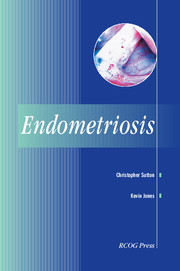Chapter 5 - Surgical treatment
Published online by Cambridge University Press: 05 February 2014
Summary
Laparoscopic surgery
In the pioneering days of operative laparoscopy, the Frenchman, Raoul Palmer, and the German, Hans Frangenheim, popularised laparoscopic surgery, but it was essentially limited in its use to female sterilisation and the aspiration and fenestration of ovarian cysts. Kurt Semm, a trained engineer as well as a brilliant surgeon, took operative laparoscopy one stage further. He invented several instruments and techniques that were necessary for the keyhole approach, and he described a series of operations that could be performed safely through small incisions avoiding the complication of a large laparotomy incision.
At that time, electrosurgery had been associated with a large number of accidents during the performance of female sterilisation, which were due to a stray radio-frequency current inherent in early electrosurgical generators. The frustration at being unable to cut and coagulate effectively with electrosurgery quickly led to the early enthusiasm for laparoscopic laser surgery.
Advantages of laparoscopic surgery
Laparoscopic surgery embraces all the principles of microsurgery:
• adequate exposure
• magnification
• minimal tissue handlin
• strict attention to haemostasi
• prevention of tissue desiccation.
The pneumoperitoneum inflates the abdomen and keeps the bowel out of the operation site, ensuring adequate exposure and an excellent view. The magnification factor of a laparoscope is around eightfold. The use of lasers ensures a non-contact method of operating, so there is minimal tissue handling, and strict attention is paid to haemostasis.
- Type
- Chapter
- Information
- Endometriosis , pp. 37 - 60Publisher: Cambridge University PressPrint publication year: 2004



